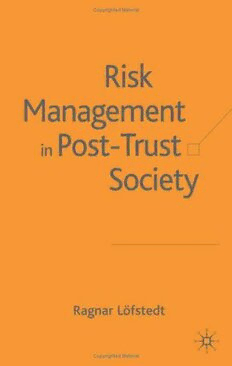
Risk Management in Post-Trust Society PDF
184 Pages·2005·0.793 MB·English
Most books are stored in the elastic cloud where traffic is expensive. For this reason, we have a limit on daily download.
Preview Risk Management in Post-Trust Society
Description:
Risk communication helps companies, governments and institutions minimize disputes, resolve issues, and anticipate problems before they result in an irreversible breakdown in communications. Most policy makers still use outdated methods--developed at a time before health scares like BSE, genetically modified organisms and dioxin in Belgian chicken feed eroded public confidence in industry and government--to communicate policies and achieve their objectives. Good risk communication is still possible, however. In this book, through the use of a host of case studies from four countries, the author identifies a series of methods that are set to work in a post-trust society.
See more
The list of books you might like
Most books are stored in the elastic cloud where traffic is expensive. For this reason, we have a limit on daily download.
